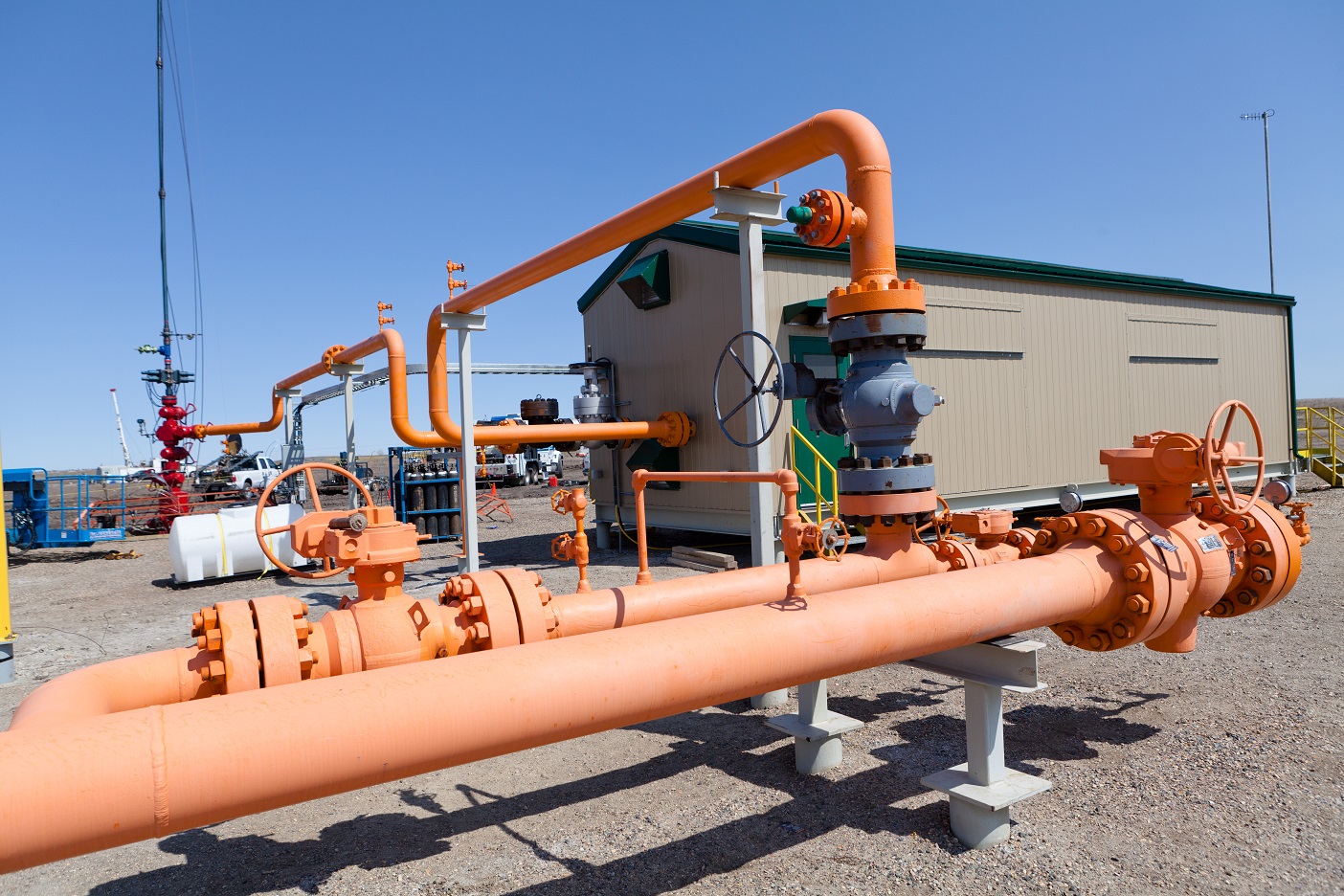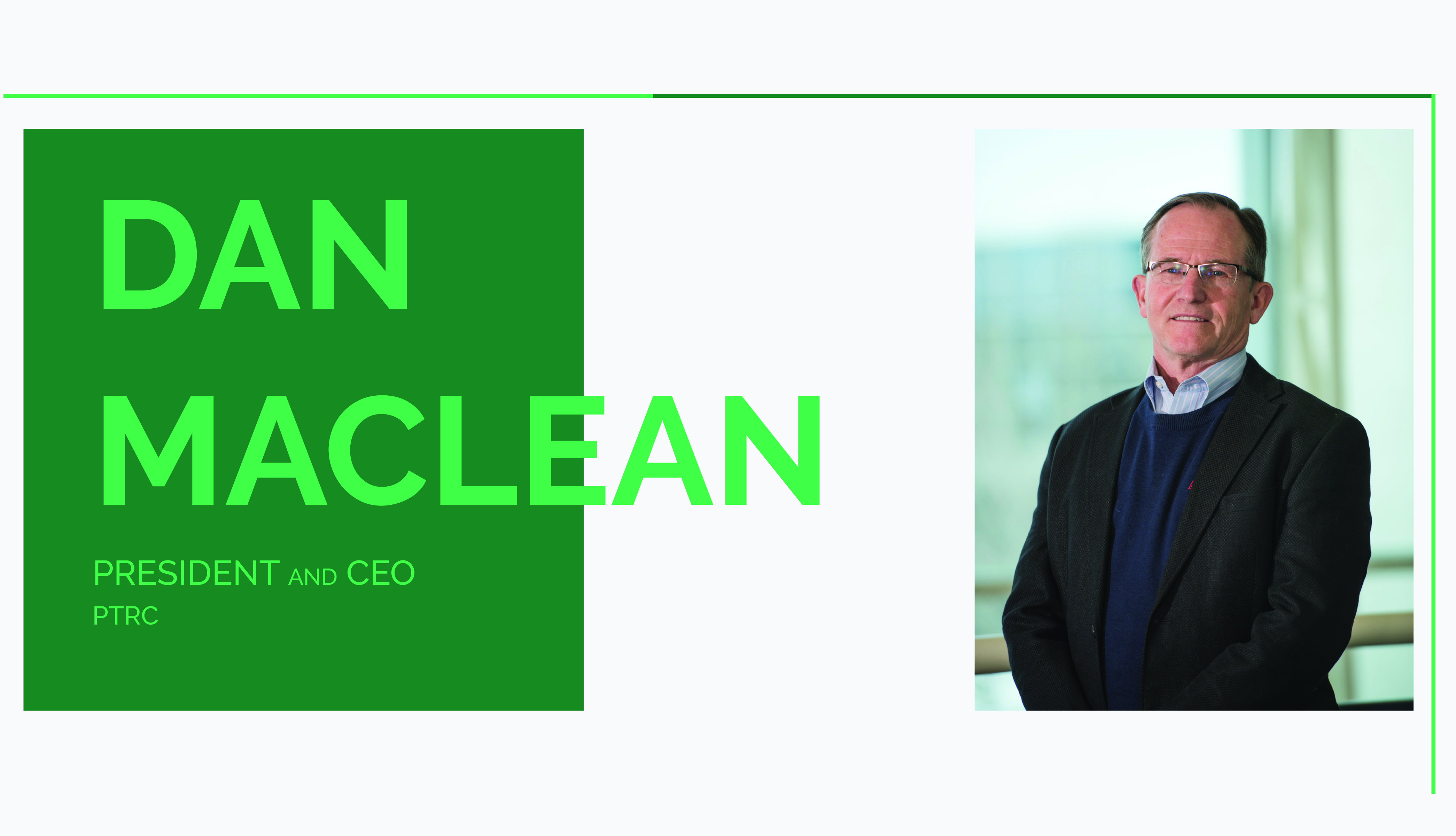| On behalf of the PTRC I would like to start my blog with an acknowledgement of the tragedy of the residential school system as highlighted by the recent discoveries of unmarked graves at the former residential school site in Kamloops BC, and at the Marieval Residential School at Cowessess, Saskatchewan. PTRC offices are located on the Treaty 4 Territory beside the campus of the University of Regina, which is also home to the First Nations University of Canada. The PTRC supports the First Nations University through an annual undergraduate student scholarship in science. Our hearts and support go out to all First Nations people at this time. |

Image from: https://corporatefinanceinstitute.com/resources/knowledge/other/esg-environmental-social-governance/
Two recent press announcements out of Alberta caught our attention in the past month: "OilSands Pathway to Net Zero" and "Pembina and TC Energy Partner to Create World-Scale Carbon Transportation and Sequestrations Solution: The Alberta Carbon Grid"
Oil Sands Pathway to Net Zero (as summarized from first link above):
CALGARY, Alberta, June 9, 2021 – Canadian Natural Resources, Cenovus Energy, Imperial, MEG Energy and Suncor Energy formally announced the Oil Sands Pathways to Net Zero initiative. These companies operate approximately 90% of Canada’s oil sands production. The goal of this unique alliance, working collectively with the federal and Alberta governments, is to achieve net zero greenhouse gas (GHG) emissions from oil sands operations by 2050 to help Canada meet its climate goals, including its Paris Agreement commitments, and 2050 net zero aspirations. For more information visit the website: www.oilsandspathways.ca/
Pembina and TC Energy Partner (as summarized from second link above):
CALGARY, AB, June 17, 2021 /CNW/ - Pembina Pipeline Corporation ("Pembina" or "PPL") (TSX: PPL) (NYSE: PBA) and TC Energy Corporation ("TC Energy") (TSX, NYSE: TRP) are pleased to share their plan to jointly develop a world-scale carbon transportation and sequestration system which, when fully constructed, will be capable of transporting more than 20 million tonnes of CO2 annually. By leveraging existing pipelines and a newly developed sequestration hub, the Alberta Carbon Grid ("ACG" or the "Project") represents the infrastructure platform needed for Alberta-based industries to effectively manage their emissions, contribute positively to Alberta's lower-carbon economy and create sustainable long-term value for Pembina and TC Energy stakeholders.
Both of these announcements speak to similar goals the PTRC supports:
- Research to reduce GHG emissions of heavy oil producing companies in the Lloydminster SK/AB area.
- The development of a Saskatchewan Carbon Grid/Trunkline in support of a province-wide carbon economy.
Both goals are aspirational in nature to the PTRC as they require leadership from industry and support from both levels of government (provincial and federal) to be achieved. To that extent, the PTRC is preparing to provide support as needed in both of these goals.
In the coming weeks PTRC will be proposing to set up and alliance with heavy oil producing companies operating in the Lloydminster area to investigate the potential to store captured CO2 from emitters in the region, via injection into the Deadwood Formation in that area. The Deadwood is the same formation currently storing CO2 at our project near Estevan, Saskatchewan known as Aquistore, located next to the Boundary Dam’s coal-fired power plant and carbon capture facility. The Deadwood Formation is a thick, deep saline sandstone reservoir with good porosity and permeability. The PTRC has been operating all Measurement Monitoring and Verification (MMV) of CO2 Storage at the Aquistore site for the past 7 years. Combined with 16 years of managing MMV at the Weyburn CO2 EOR project, the PTRC has over 23 years of experience ensuring CO2 can be stored safely and permanently in geologic formations in Saskatchewan.

Image of CO2 Storage Site at Aquistore
Southeast Saskatchewan is home to over 500 hydrocarbon projects, from over 100 geologic formations, producing some 450,000 BOPD. Only two of the 500 projects are commercial CO2 EOR/Storage projects operating since the early 2000’s (Weyburn and Midale). Both CO2 EOR/Storage projects have, combined, stored over 40MM Tonnes of CO2.
The opportunity to implement more CO2 EOR/Storage projects in SE Saskatchewan will be driven by industry’s desire to mitigate CO2 emissions and the right economic conditions. Infrastructure to deliver CO2 to each project and sourcing reliable cost effective supplies of CO2 will be key. The infrastructure required in the form of a Saskatchewan “CO2 Trunkline” or “Grid” will need to be industry-driven, similar to the announced Pembina/TC Energy Partnership. Reliable cost effective CO2 supplies will require support from large local industry emitters. Both infrastructure and cost effective sources of CO2 will likely require support from both levels of government, similar to the funds provided in the early days of the Alberta Carbon Trunkline.
The PTRC is engaged in support of other new technologies for reducing GHG emissions and “Net Zero” energy production. Storing CO2 in geologic formations is core to PTRC’s research focus. We also support other net zero energy projects including geothermal DEEP Earth Energy Production (or DEEP).
DEEP is a federally funded pilot project designed to investigate geothermal potential from the Deadwood Formation. The pilot is located some 23 km to the SW of PTRC’s Aquistore CO2 storage site. The DEEP pilot is designed to test the production of hot in-situ water (brine) from the Deadwood, the extraction of its heat/energy for electrical generation, and the subsequent reinjection of cooled in-situ brine back into the formation. The proximity of the DEEP pilot to Aquistore and the extraction/reinjection of Deadwood brine (the same formation into which Aquistore is injecting CO2 for storage) makes DEEP results of intense interest to PTRC.
The PTRC is in the process of evaluating the geothermal potential at Aquistore. In Aquistore’s case, the geothermal driver is not brine, but the stored CO2. The conversation around looking at Aquistore as a possible CO2 geothermal test began at our Aquistore Annual General Meeting held in October of 2019. The concept was presented to us by Dr Martin Saar of ETH Zuirch, who along with Michael Weschsung of Siemens both attended the AGM. This encounter led to a theoretical study through reservoir simulation, to evaluate the potential to reproduce CO2 from Aquistore without producing substantial formation water with it. This work was conducted by Dr. Rick Chalaturnyk and Dr. Alireza Rangriz Shokri, both from the University of Alberta. The results of this initial study has encouraged us to continue to further investigate the feasibility of performing a CO2 geothermal pilot at Aquistore. There are at least 3 years of additional study required to get to a pilot project decision.
Finally I would like to acknowledge the newly minted “Canadian Energy Transition Hub” (https://www.cetri.ca/about-ceth ) created by the University of Regina, and centered at the world-class CETRI (Clean Energy Technologies Research Institute) located just behind the PTRC building in Innovation Place Business Park beside the University of Regina. The areas of research the new Hub will engage in include: CCUS, Nuclear (Small Modular Reactors or SMRs), Hydrogen Energy, Renewable Energy, Smart Microgrids, Energy Storage, and Geothermal. The PTRC is uniquely positioned to support the CETH in its goals related to CCUS and Geothermal Energy.


.png)
